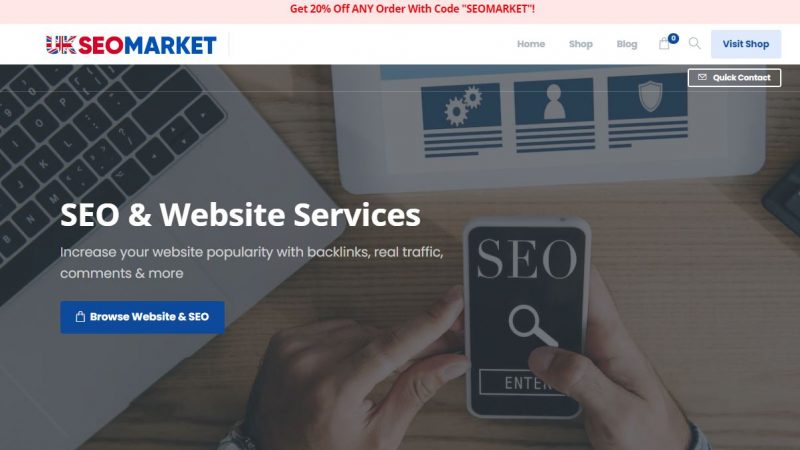Guide For Making Marketing Contents

Content marketing is a strong way to find a clear audience, keep them interested, and grow your business. Building long-term connections with possible buyers based on trust and shared understanding is the goal. This can be done through stories, helpful tips, and teaching materials. To put it simply, content marketing is the skill of talking to your audience without trying to sell them something. You instead give them something of value right away and build your brand as a thought leader in your field. If you do content marketing right, it can help you reach your business goals, get more leads, make more money, and build a group of loyal fans who will promote your brand. To help you do well in this ever-changing field, we’ll look at the different kinds of content, content marketing strategies, tools, and techniques you need.
Benefits of Content Marketing for Businesses
Businesses can use content marketing to make more people aware of their brand, boost their search engine ranks, get more people to visit their website, keep customers coming back, and find new sales leads. Businesses can become idea leaders and industry leaders in their fields by making and sharing useful material.
Content marketing can help businesses build brand recognition and get more attention online, which is one of its main benefits. Businesses can get new customers and build their brand’s power in the market by posting useful and high-quality material on their website and social media pages.
Content marketing can also help your website rise higher in search engines, which will bring more people to your site. Businesses can get more direct traffic to their website by using useful keywords in their content. This helps them rank higher on search engines.
Content marketing can also help you keep customers coming back, which is a big plus. Businesses can build stronger ties with their current customers and keep them coming back for more by constantly giving them useful information.
Finally, content marketing can also bring in new sales leads by using useful and interesting content to draw potential buyers. To do this, you can make content based on the wants and needs of your target audience and then use sales teams and influencer marketing to turn leads into customers.
Develop a Content Strategy
If a business wants to get the most out of its content marketing, it needs to make a content plan. Making a plan for how to write and share material to reach certain business goals is part of this. Key performance indicators (KPIs) are a way to measure growth and success in a content plan. They should be used to choose the right social media sites, the type of content to post, and the group you want to reach. This article will talk about the steps that need to be taken to create a complete content plan that can help businesses connect with their audience, boost their search engine ranks, and eventually find new sales leads.

Define your Target Audience
Identifying your target group is one of the most important steps in making content marketing work. If you know who you’re writing for, you can make sure that your material fits their wants, tastes, and hobbies. This gives possible customers a more unique experience, which makes it more likely that they will become regular customers.
Audience study and buyer personas are strong ways to find out who your ideal customers are. By doing study on your possible buyers, you can learn a lot about their hobbies, behaviors, and data. Buyer characters are made-up versions of your perfect customer. They help you focus on your goals and are a good example of the type of person you want to reach.
Once you know who you want to reach, you can create the types of material and outlets that will connect with them the most. You can give your audience worth and meet their wants by writing useful blog posts, interesting social media posts, or interactive content. You can also pick the methods that your audience is most likely to be using, like email marketing or social media networks, to reach them more effectively.
Set Goals and Objectives
A key part of any successful content marketing plan is setting SMART goals and targets. SMART goals are clear, measured, attainable, relevant, and have a due date. This means they give you a clear focus and direction for your work.
You can make sure that your content marketing plan really helps your business by making sure that your SMART goals are in line with your business goals and your marketing goals in general. If your goals are clear and measured, you can keep track of your progress and make changes as needed to get the best results.
Figuring out what you want to achieve with your content marketing will help you make better content. This way, your information will be more relevant to the people you want to reach and meet their unique needs. You can also make sure that everyone on your content team is working toward the same things by setting SMART goals and targets.
To be successful with content marketing, you need to set SMART goals and targets. This way, you can put your time and money into the jobs and outlets that will really get results. If you take the time to make goals that are specific, measured, and attainable, and that have a due date, your content marketing plan will really help your business.
Analyze Your Competitors’ Content Strategies
If you want to get ahead in your content marketing, you should look at how your rivals are using content. This way, you can learn about the kinds of content your rivals are making, the social media sites they use, and the keywords they’re focusing on. You can change your strategies, make more focused content, and eventually make your content marketing better by seeing what works and what doesn’t for your rivals.
You can also use tools like Google Analytics to collect data and find ways to make your site better. You might find useful buzzwords and topics that you missed by looking at your competitors’ websites and social media pages. You can choose the best social media sites for distributing your content if you know which ones your rivals are using.
Identify Relevant Topics and Keywords
One of the most important steps in making a content marketing plan that works for your target group and gets results is finding useful topics and keywords. There are several things you can do to find the keywords and themes that will work best for your writing.
This will help you plan your content strategy and make sure that all of your material stays on track.
Next, use tools for keyword research to do study and narrow down the keywords you want to use based on your theme. This can be done with the help of tools like Ubersuggest, the Keyword Magic Tool from SEMrush, and keywordtool.io. Look for both target keywords and long-tail keywords. Target keywords are words that are directly related to your product or service, while long-tail keywords are more specific words that your target audience may use.
Also, think about buzzwords that are connected to your main topic. These can give you more content ideas and help your search engine results. As you make your phrase list, don’t forget to think about your business goals and the kind of person you want to buy from you.
Plan an Editorial Calendar and Content Types
A strong writing schedule is an important part of any content marketing plan that works. An editorial calendar is a schedule that outlines all of your content marketing assets, including blog posts, emails, ebooks, podcasts, and more, across a given period. This allows you to map out your publishing cadence, brainstorm ideas far ahead of time, and identify holidays and social events that may impact your content strategy.
To plan an effective editorial calendar, start by identifying your preferred publishing cadence, whether that’s daily, weekly, or monthly. Then, consider the types of content you want to create and how they fit into that cadence. For example, if you plan to publish a new blog post every week, you may want to alternate between different types of posts, such as listicles, how-to guides, and industry news updates
Consider incorporating guest blogging and syndication efforts into your editorial calendar as well to expand your reach and increase your content’s visibility.
By creating a well-structured editorial calendar that includes diverse content types and accounts for important dates throughout the year, you can ensure that your content marketing efforts are purposeful and effective.
Create Quality Content
To stand out from the competition and capture the attention of potential customers, your content must not only be valuable and informative but also engaging and well-crafted. In this guide, we’ll explore the essential elements of creating high-quality content, from defining your target audience to selecting the right content formats and distribution channels. Whether you’re a seasoned content marketer or just getting started, these tips and best practices will help take your content efforts to the next level and drive your business toward content marketing success.

Brainstorm Ideas for Your Content Pieces
To create compelling content for your audience, it’s essential to start with a solid brainstorming session. Generating fresh and unique ideas for your content strategy can be challenging, but there are several strategies you can utilize to help motivate and inspire your team.
One way to get the creative juices flowing is to explore industry-related publications. Keeping up to date with the latest trends and news in your industry can provide a wealth of content ideas. Utilizing keyword planners can also help uncover relevant topics your audience is searching for, giving you insights into what type of content is needed.
Conversing with your sales team can also prove beneficial. They can provide valuable insights into common questions and concerns from potential customers, which you can address in your content pieces. Sending out surveys to customers can also help them gain firsthand knowledge of their pain points, interests, and preferences.
While it’s necessary to scrutinize competitors’ content for ideas, it’s important to twist the concept with a personal perspective. Don’t copy their ideas. Instead, take the underlying idea and apply your unique spin to make it stand out.
Successful content strategies evolve by keeping the target audience’s desires and needs in mind. Utilize analytics to monitor and track how your content performs and adjust accordingly. By continually analyzing and refining your approach, you can create content your audience finds valuable and engaging.
Research Your Topics Thoroughly
Researching topics thoroughly is crucial for effective content creation. Before diving into writing, it’s essential to understand your target audience’s needs and interests and conduct proper keyword research for SEO optimization. This helps to ensure that the content you create is relevant and valuable to your readers while also driving traffic to your website.
By gaining a deep understanding of your target audience, you can identify their pain points, interests, and preferences. This information can then be incorporated into your content to provide a more personal and engaging experience for the reader. Proper keyword research is also key to ensuring that your content is ranked higher on search engine results pages, giving it greater visibility and generating more clicks.
Additionally, researching competitors and industry trends can help you create fresh and relevant content that stands out from what is already available. By analyzing your competitors’ content, you can identify gaps in the market and provide unique perspectives and solutions. Staying up to date with industry trends also helps you to be proactive in creating content that addresses emerging topics and positions your business as an authority in your niche.
Optimize Your Content for Search Engines (SEO)
Optimizing your content for search engines (SEO) is a crucial aspect of content creation. Doing so not only makes your content more discoverable on search engine page results but also improves the reader’s experience. By incorporating relevant keywords and phrases, search engines like Google can understand the context of your content and serve it to potential readers looking for information relevant to your topic.
Using multimedia elements such as images, videos, and infographics within your content can also enhance the reader’s experience. Not only do they break up the text and make it more visually appealing, but they can also provide more detailed explanations and add credibility to your content.
To optimize your content effectively, it’s important to conduct keyword research to identify which keywords and phrases are commonly searched for by your target audience. Including these keywords naturally within your content can help increase your visibility on search engines and attract more readers.
Make Use of Visuals, Multimedia, and Videos
Visuals, multimedia, and videos are becoming increasingly essential in any content marketing strategy. With attention spans shortening and the volume of online content increasing visual content has become an effective way to communicate messages in an easily digestible manner. It’s no wonder that memes, which are essentially visual content, have become a ubiquitous part of our online culture, with even politicians and influencers using them to reach a wider audience.
Incorporating visual content into your marketing strategy can be as simple as including an infographic, gif, chart, or diagram in your blog post or social media posts. These types of visual content can not only help you convey your message more engagingly but also enhance the overall design of your content.
When it comes to multimedia, videos are one of the most popular types and can be used to provide valuable educational content, product demonstrations, or even behind-the-scenes glimpses of your business. They can be shared on your website, social media channels, or even in emails to potential customers.
By making use of visual content, you can increase the chances of your content being shared across social media platforms, expand your reach to potential customers, and enhance the overall quality of your content. So, don’t neglect the benefits of incorporating visual content into your content marketing efforts.
Leverage Influencers to Promote Your Contents
One of the most effective marketing strategies today is to leverage influencers in your industry to promote your content. Influencers can help increase the visibility of your content and reach potential customers in ways that traditional marketing methods cannot. Here are some top strategies for leveraging influencers to promote your content:
- Identify the right influencers: Look for influencers who share your target audience and who are relevant to your brand. Reach out to them and build relationships with them.
- Offer value: Offer influencers something of value in exchange for them promoting your content. This could be exclusive access to your products or services, or offering to create content for them in return.
- Collaborate on content: Work with influencers to create content that is both engaging and meaningful to their followers. This can include sponsored posts, guest blogging, or even social media takeovers.
- Leverage their followers: Once influencers have shared your content, don’t stop there. Leverage their followers by using their posts to reach and engage with your audience directly.
Influencers can increase the visibility of your content and reach potential customers in a personalized and authentic way. By identifying the right influencers, offering value, collaborating on content, and leveraging their followers, you can effectively leverage influencers to promote your marketing content and successfully reach your target audience.
How to Write a Press Release
A press release is a powerful tool for promoting your brand and reaching a wider audience. Write a successful press release, it must be newsworthy, direct, concise, and written according to the standard press release format. How to Write a Press Release? Start by identifying a newsworthy angle that is relevant to your audience and industry. This could be a new product launch, a significant event or achievement, or a major company announcement.
Once you have your angle, write your press release using a standard format, including a headline, subhead, and body text that highlights the key details. Make sure your press release is direct and to the point, emphasizing the most important information first. Be sure to proofread your press release carefully, as errors can undermine its credibility and impact.
Finally, plan your editorial calendar to include opportunities for press releases and target relevant newspapers, magazines, and online publications. Consider issuing your press release through a distribution service to increase its impact and reach. With these strategies in mind, you can write a successful press release that generates buzz, builds your brand, and helps you achieve your content marketing goals.
Conclusion
In conclusion, it is vital to have the right people on board to execute a successful content marketing strategy and bring a brand identity to life. Skilled and experienced content creators play a crucial role in creating compelling and valuable content that resonates with your target audience.

